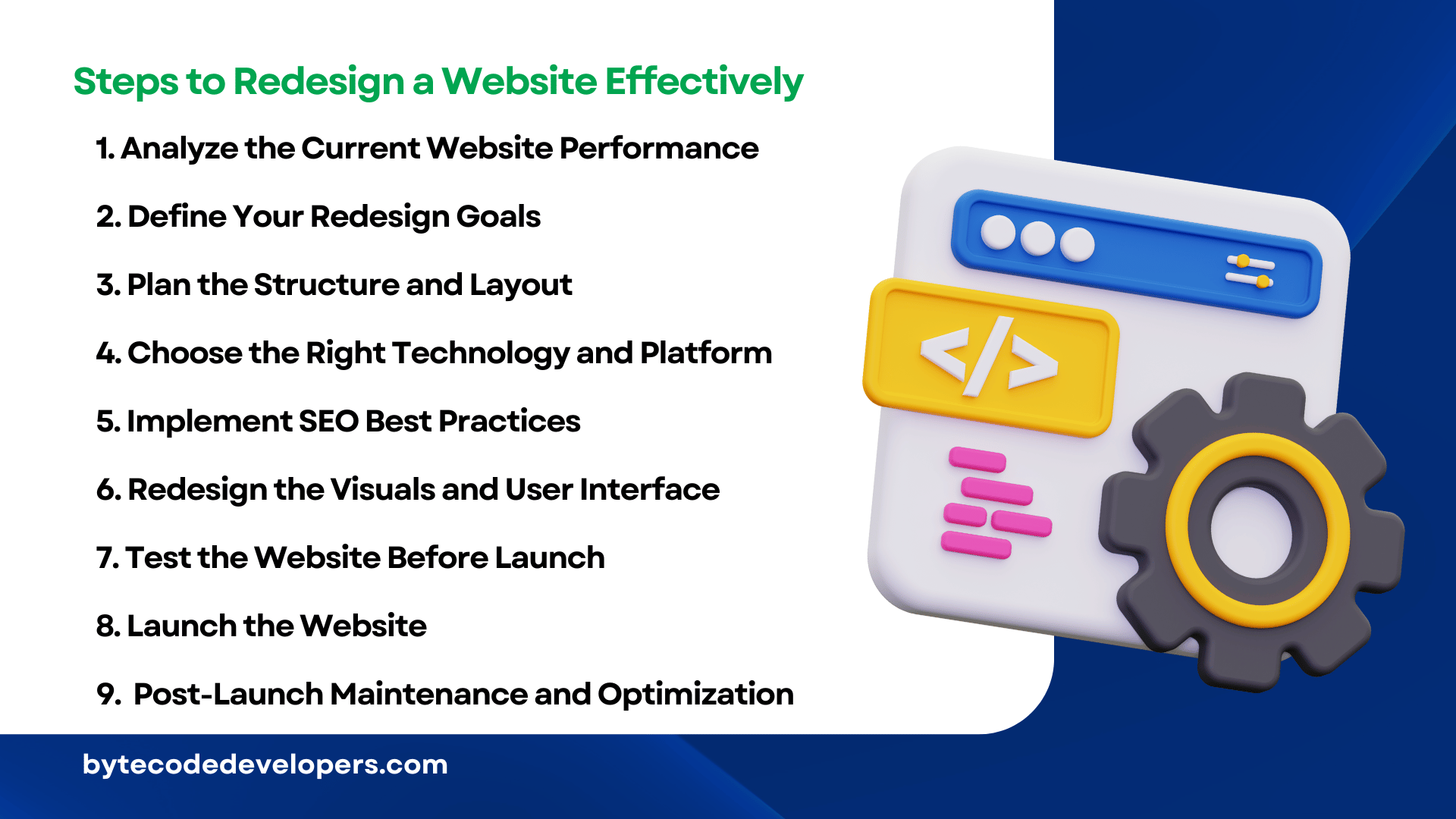
In today's fast-paced digital world, website redesigning has become an essential part of maintaining a strong online presence. A well-executed website redesign can revitalize your brand, enhance user experience, and significantly boost your search engine rankings. In this detailed guide, we will walk you through the entire website redesign process, from understanding the need for a redesign to implementing the changes and measuring success. Whether you're looking to improve your website's aesthetics, functionality, or performance, this article will equip you with the knowledge to make informed decisions.
Why Website Redesigning is Crucial for Your Online Presence
In the ever-evolving digital landscape, it’s easy for websites to become outdated. New design trends, improved user behaviors, and advancements in technology can all make your website feel stale or unresponsive. Website redesigning is not just about aesthetic improvements; it's about aligning your website with current user expectations, enhancing usability, and improving conversion rates.
Redesigning your website provides an opportunity to optimize performance, enhance mobile responsiveness, and ensure your site is SEO-friendly. It’s also a chance to integrate the latest design trends and technologies, such as responsive design, faster loading speeds, and better accessibility.
Steps to Redesign a Website Effectively
1. Analyze the Current Website Performance
Before jumping into a redesign, it's essential to assess the current state of your website. This phase involves reviewing key performance indicators (KPIs) such as:
Traffic: Which pages receive the most traffic? Which ones are underperforming?
Bounce Rates: Are visitors leaving quickly from specific pages?
Conversion Rates: How well does your website convert visitors into customers or leads?
User Experience (UX): What is the feedback from current users? Are they able to navigate easily?
By identifying the pain points of your current site, you can make data-driven decisions on which aspects to improve during the redesign.
2. Define Your Redesign Goals
Understanding the purpose of your website redesign is critical to its success. Are you looking to improve the user experience (UX)? Do you need to make the site mobile-friendly? Or do you want to optimize for better SEO performance?
Your goals could include:
Enhancing website load speed.
Reducing bounce rate and increasing engagement.
Improving the website’s mobile compatibility.
Streamlining the conversion funnel.
Boosting the visibility in search engines.
Clearly defining your goals will guide the redesign process and ensure the final product meets your objectives.
3. Plan the Structure and Layout
The structure of your website plays a significant role in the user experience (UX). A well-structured website ensures that visitors can easily find the information they need. When planning your redesign, consider:
User Flow: Map out how visitors will navigate through your site. Ensure the design is intuitive and leads users through a seamless journey.
Simplicity: Avoid overloading the page with excessive information. Keep it simple and clear.
Call-to-Action (CTA): Place clear CTAs on each page to guide users toward the desired actions, such as signing up, purchasing, or contacting you.
4. Choose the Right Technology and Platform
Choosing the right platform and technology is vital for the success of your website redesign. If your website is on a content management system (CMS) like WordPress, Shopify, or Squarespace, ensure that it is scalable and user-friendly. Consider:
Platform Flexibility: Does the platform offer customization options for your needs?
SEO Tools: Does the CMS provide built-in SEO features like meta tags, SEO-friendly URLs, and easy integration with Google Analytics?
Mobile Optimization: Ensure that the platform supports responsive design so that your website works well on all devices.
5. Implement SEO Best Practices
One of the most crucial aspects of a website redesign is ensuring that your new site remains SEO-friendly. Implementing SEO best practices during the redesign can help maintain your current rankings and improve your website's visibility in search engines.
Focus on:
Keyword Research: Ensure that your redesign incorporates relevant keywords in the content, titles, and metadata.
SEO-Friendly URLs: Make sure your URL structure is clean and optimized for search engines.
Meta Descriptions: Write compelling and keyword-rich meta descriptions for each page.
Internal Linking: Create internal links to improve site navigation and keep users engaged.
Mobile Optimization: With mobile-first indexing, ensure that your site is mobile-friendly.
6. Redesign the Visuals and User Interface
The visual design of your website is often the first thing users notice. A modern and attractive design will improve user perception and help retain visitors. When redesigning the visuals:
Use Consistent Branding: Ensure that the design reflects your brand’s identity. Use consistent colors, fonts, and logos.
Simplify Navigation: A cluttered navigation bar can confuse users. Organize the menu into logical categories and make it easy to navigate.
High-Quality Images: Use high-quality images and videos that load quickly to enhance the user experience.
7. Test the Website Before Launch
Before launching your newly redesigned website, conduct thorough testing to ensure that everything works as expected. This includes:
Cross-Browser Testing: Make sure the website functions correctly across different browsers (Chrome, Firefox, Safari, etc.).
Mobile Testing: Check the website’s responsiveness on various mobile devices to ensure a seamless experience.
Performance Testing: Test the website’s loading speed and make sure it loads quickly for a better user experience.
User Testing: Get feedback from real users to identify any usability issues.
8. Launch the Website
After testing and finalizing the design, it’s time to launch your redesigned website. Be sure to monitor the site closely after launch to address any unexpected issues.
Monitor Traffic: Track traffic and user behavior to ensure everything is functioning properly.
Monitor SEO Performance: Keep an eye on your search engine rankings and ensure that your redesign has not negatively impacted your SEO.
9. Post-Launch Maintenance and Optimization
Website redesigning is an ongoing process. After launch, it’s crucial to continue monitoring and optimizing your site. Regular updates, performance checks, and SEO tweaks will help keep your site performing at its best.
Content Updates: Regularly add new, high-quality content to keep the website fresh and engaging.
Analytics: Use tools like Google Analytics to track user behavior and make data-driven decisions.
SEO Audits: Conduct regular SEO audits to identify areas for improvement and maintain high rankings.
How Does Website Redesigning Work?
Website redesigning is a multi-step process that requires careful planning and execution. From evaluating the current website’s performance to making SEO optimizations and launching the new design, the process involves various stages. Understanding the technical, design, and SEO aspects of a redesign will help ensure that your website not only looks great but also performs well and attracts more visitors.
The steps outlined above will guide you through the redesign process, from initial analysis to final launch and beyond. Whether you're redesigning for aesthetic reasons, SEO improvements, or performance enhancements, each step is crucial for achieving your business goals.




 March 26, 2025
March 26, 2025

-thumb.webp)








-thumb.webp)